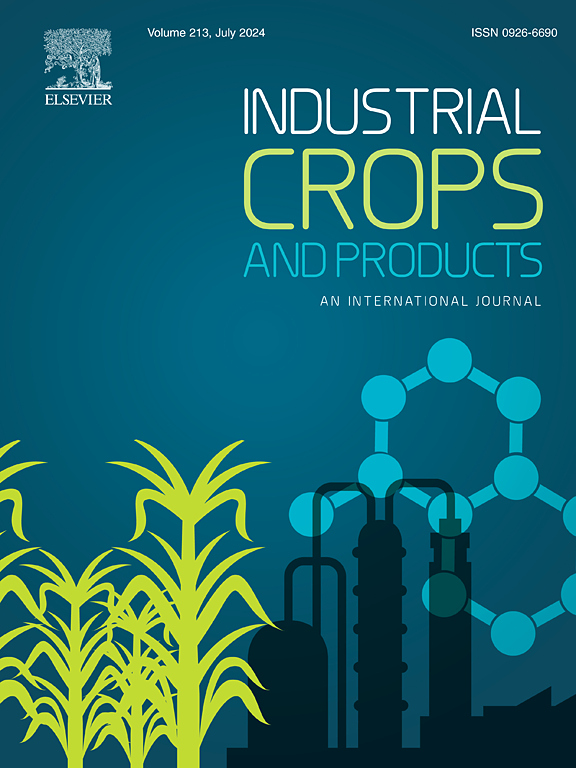UAV-based LiDAR and multispectral sensors fusion for cotton yield estimation: Plant height and leaf chlorophyll content as a bridge linking remote sensing data to yield
IF 5.6
1区 农林科学
Q1 AGRICULTURAL ENGINEERING
引用次数: 0
Abstract
Accurate crop yield prediction is essential for enhancing agricultural sustainability and guiding economic policy decisions. It is effective to fuse multi-source remote sensing data to predict crop yields, but difficult to reveal the effects of physiological processes on yield estimation models, and challenging to guide crop field production and management. In this study, an innovative framework was introduced to construct plant height (PH) and leaf chlorophyll content (LCC) inversion models for UAV LiDAR and multispectral data through different strategies. PH and LCC, two key growth features affecting cotton yield, were evaluated using multiple linear regression (MLR), partial least squares regression (PLSR), and extreme gradient boosting (XGBoost) algorithms for single-feature and multi-feature fusion, respectively. The multi-feature fusion model based on the XGBoost algorithm was significantly better than the single-feature model (R²=0.744). Further optimization of the multi-feature fusion model revealed that multi-temporal growth features as input variables significantly improved the accuracy of the multi-feature fusion model compared with that based on single-temporal (R²=0.802). Shapley additive explanations (SHAP) analysis revealed the key contribution of LCC to yield formation at the flowering and boll development stage in different cotton varieties. Cluster analysis confirmed that the dynamic trends of PH and LCC were closely related to yield, indicating that PH and LCC could be used as a bridge between remote sensing data and yield. This study highlights the value of UAV-based multi-dimensional and multi-temporal data fusion of growth features in yield estimation models, enabling a deeper understanding of yield formation mechanisms and providing novel methodological tools for phenomics research and precision agriculture management.

基于无人机的激光雷达和多光谱传感器融合用于棉花产量估算:植物高度和叶片叶绿素含量作为连接遥感数据与产量的桥梁
准确的作物产量预测对提高农业可持续性和指导经济决策至关重要。融合多源遥感数据进行作物产量预测是有效的,但难以揭示生理过程对作物产量估算模型的影响,对指导作物田间生产和管理具有挑战性。本研究引入创新框架,通过不同策略构建无人机激光雷达和多光谱数据的植物高度(PH)和叶片叶绿素含量(LCC)反演模型。采用多元线性回归(MLR)、偏最小二乘回归(PLSR)和极端梯度增强(XGBoost)算法分别对影响棉花产量的两个关键生长特征PH和LCC进行评价。基于XGBoost算法的多特征融合模型显著优于单特征模型(R²=0.744)。对多特征融合模型进行进一步优化,结果表明,与基于单时间点的多特征融合模型相比,多时间点生长特征作为输入变量显著提高了多特征融合模型的准确率(R²=0.802)。Shapley加性解释(SHAP)分析揭示了LCC对不同棉花品种开铃期产量形成的关键贡献。聚类分析证实,PH和LCC的动态变化趋势与产量密切相关,表明PH和LCC可以作为遥感数据与产量之间的桥梁。本研究突出了基于无人机的生长特征多维、多时相数据融合在产量估算模型中的价值,使我们能够更深入地了解产量形成机制,并为表型组学研究和精准农业管理提供新的方法工具。
本文章由计算机程序翻译,如有差异,请以英文原文为准。
求助全文
约1分钟内获得全文
求助全文
来源期刊

Industrial Crops and Products
农林科学-农业工程
CiteScore
9.50
自引率
8.50%
发文量
1518
审稿时长
43 days
期刊介绍:
Industrial Crops and Products is an International Journal publishing academic and industrial research on industrial (defined as non-food/non-feed) crops and products. Papers concern both crop-oriented and bio-based materials from crops-oriented research, and should be of interest to an international audience, hypothesis driven, and where comparisons are made statistics performed.
 求助内容:
求助内容: 应助结果提醒方式:
应助结果提醒方式:


